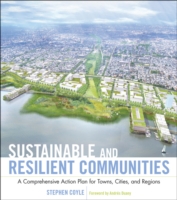- ホーム
- > 洋書
- > 英文書
- > Science / Mathematics
Full Description
The papers comprising this second volume of Human Behavior and the Environment represent, as do their predecessors, a cross section of current work in the broad area of problems dealing with interrelation ships between the physical environment and human behavior, at both the individual and the aggregate levels. Considering the two volumes as a unit, we have included papers covering a broad spectrum of problems ranging from the theoretical to the applied, and from the disciplinary-based to the interdisciplinary and professional. Approxi mately half of the papers are written by psychologists, with the remainder coming, in part, from such other disciplines as sociology, geography, and from such diverse applied and professional fields as natural recreation, landscape architecture, urban planning, and opera tions research. The volumes thus provide an overview of work on current topical problems. Yet, as the field is developing, specialization is inevitably increasing apace, and the editors as well as the publisher have become convinced of the desirability for futu're volumes in this series to be organized along topical lines, with successive volumes devoted to different aspects of this rather sprawling field. Thus, Volume 3, currently in the planning stage, will be devoted exclusively to the interaction of children with the physical environment, considered from diverse viewpoints, again including authors from diverse fields of specialization.
Contents
1 Multidimensional Analysis in the Study of Environmental Behavior and Environmental Design.- Measurement and Data.- Some Multidimensional Methods.- Fundamentals of Multidimensional Scaling.- Factor Analysis.- Cluster Analysis.- Repertory Grids.- Some Other Multivariate Methods.- Summary.- References.- 2 Understanding Professional Media: Issues, Theory, And a Research Agenda.- Roles of Simulation in the Planning/Design Process.- A Communications Model of the Planning-Review Process.- The Proponents.- The Evaluators.- Simulations.- The Simulation Setting.- Public Criteria for Simulation Media.- Realism: Which Reality? Whose Reality?.- Accuracy.- Comprehensibility and Evaluation.- Engagement.- Costs and Flexibility.- Conflicts Among Criteria.- Assessing Realism.- Visual Replication.- The Media.- Evaluating the Media.- Research Agenda.- References.- 3 Environmental Stress.- Sources of Stress.- Stress-Response Characteristics.- Inadequacies of Conventional Approaches to Stress.- An Alternative Model.- Implications for Environmental Psychology Research.- Implications for Research on Stress and Coping.- References.- 4 Applied Behavior Analysis and the Solution of Environmental Problems.- The Current State of Environmental Psychology and the Solution of Environmental Problems.- The Applied Analysis of Environmentally Relevant Behavior.- Environmental Aesthetics.- Conserving Natural and Human-Produced Resources.- Conclusions and Implications.- References.- 5 Personal Space: An Analysis of e. T. HALL'S Proxemics Framework.- Spatial Distances and Zones.- Qualifications Concerning Spatial Zones.- Culture and Proxemics.- The Present Status of Research on Personal Space.- Plan for Analyzing Research on Personal Space.- General Characteristics of Personal Space Research.- Studiesof Spatial Intrusion and Invasion.- Interpersonal Relationships and Spatial Distance.- Individual Characteristics and Spatial Distance.- Relationship between Distance and Other Behaviors.- Culture and Personal Space.- Summary and Conclusions.- References.- 6 Energy and the Structuring of Society: Methodological Issues.- Tools for Thinking about Energy and Society.- Energy as an Environmental Issue.- Energy in Society.- A Research Suggestion.- Appendix A: On Social Science, Philosophical Anthropology, and Social Policy.- Appendix B: The Nested System: A Short Commentary.- Appendix C: Indicators for the Energy-Society Model.- References.- 7 The Use of Social Indicators in Environmental Planning.- A Brief History of the Social-Indicator Movement.- Environmental Planning in a General Systems-Theory Framework.- Social Indicators as Measures of System Performance.- A Measure of Perceived Life Quality.- A Measure of Satisfaction with the Allocation of Time.- Conclusion.- References.







